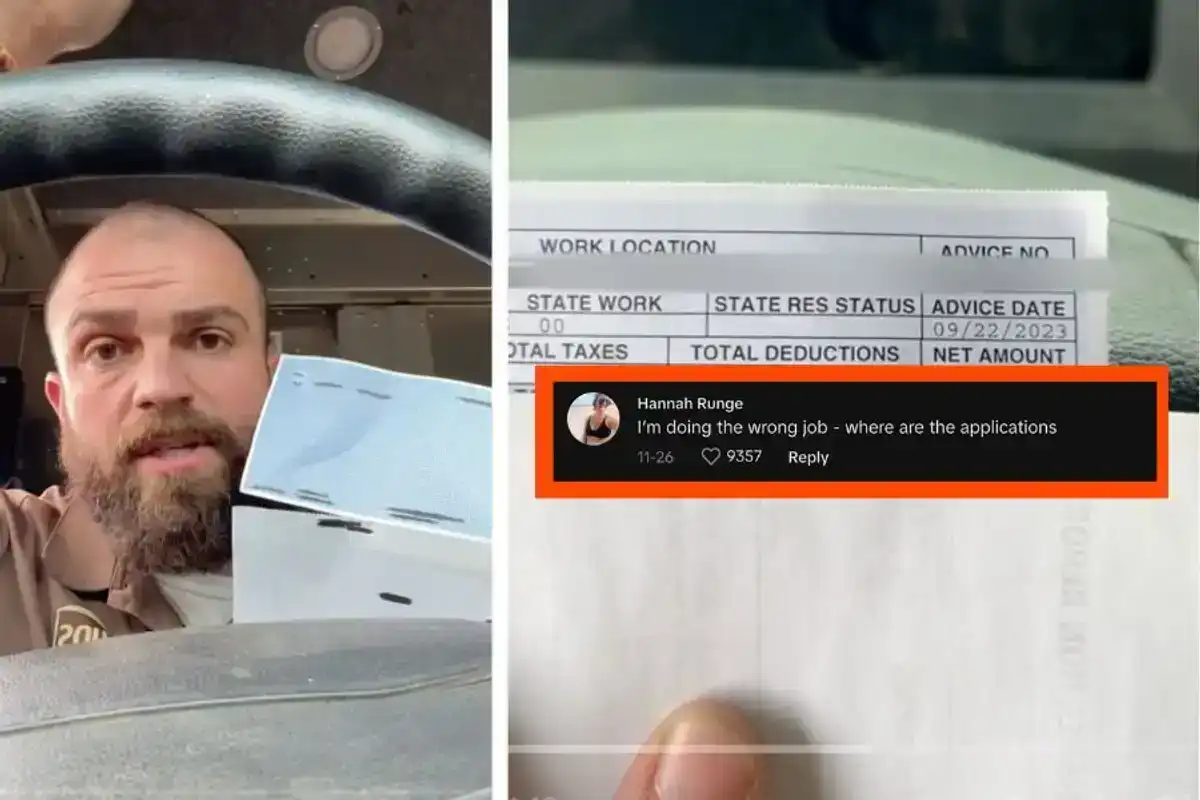UPS driver goes viral after sharing his weekly paycheck
People are shocked to find out how much delivery drivers make.
People were shocked to find out how much Skyler Stutzman earned as a UPS driver.
People are seriously considering switching careers after finding out how much can be made as a UPS delivery driver.
Skyler Stutzman, an Oregon-based UPS delivery driver, went viral in October 2023 after sharing his weekly pay stub on TikTok.
In the clip, Stutzman showed that for 42 hours of work, and at a pay rate of $44.26 per hour, he earned $2,004 before taxes, and ultimately took home just over $1,300 after deductions.
@skylerleestutzman UPS Driver Paystub Breakdown… #upspay #upswages #teamsters #ups
This shocked the nearly 12 million viewers who saw the video...and stirred their jealousy a bit. Several couldn’t help but compare Stutzman’s salary to their own—especially those in professions requiring degrees and certifications.
“Not me realizing that a UPS driver makes more than I do. 20 years in my field with a degree!” one person lamented.
Another added, “$44? I’m a dang nurse only making $32 🤦♀️”
Many even joked (or perhaps half-joked) about applying to become drivers themselves. But as Stutzman pointed out in multiple follow-up videos, earning his rate takes patience.
According to one of those clips, it took almost six years before he was offered a full time position, followed by a four-year progression of wage increases until he started making what he earns today. That’s around a decade, which one person pointed out was around the same time it takes to become a doctor.@skylerleestutzman Replying to @JS2789 How long does it take to become a top rate UPS Driver… #upswages #upspay #teamsters #upsdriver #ups
Stutzman added that, depending on the location, you would be required to work in a UPS warehouse before working as a driver. So while his paycheck might have you considering taking on the job yourself, just know that it’s not exactly taking the easy route. And we haven’t even touched on the amount of manual labor that goes into the job, rain or shine.
Stutzman also said that he shared his current paycheck in the spirit of transparency, which is a value that the teamsters upheld as they fought for increased wages and better working conditions earlier in 2023.
@skylerleestutzman Quite the 's'kerfuffle I'd say. UPS Chief Fincancial Officer Bryan Dykes and Teamster president Sean O'Brien sharing their point of view on this situation regarding UPS relationship with Amazon as well as the 20,000 Jobs that are at stake; UPS Center closures. Quite a lot going on. #upsdriver
After months of tense negotiations, as well as a threat to enact what would have been the largest single employer strike in U.S. history, disrupting deliveries across the country, the postal workers union reached an agreement with UPS.
The deal included air conditioning and ventilation improvements to delivery vehicles as well as full-time UPS drivers earning an average of $170,000 in annual pay, plus benefits. By the end of the contract, part-time union drivers would also make at least $25.75 per hour while receiving full health care and pension benefits, according to UPS CEO Carol Tomé.
From Stutzman’s perspective, his earnings shouldn’t cause envy among those in other industries, but reflect a shared need for increased wages across the board to keep up with inflation.
Big takeaways here: earning good money doesn’t always require a degree, unions are powerful, don’t underestimate the value of skilled labor, and UPS drivers deserve respect.
This article originally appeared two years ago.

